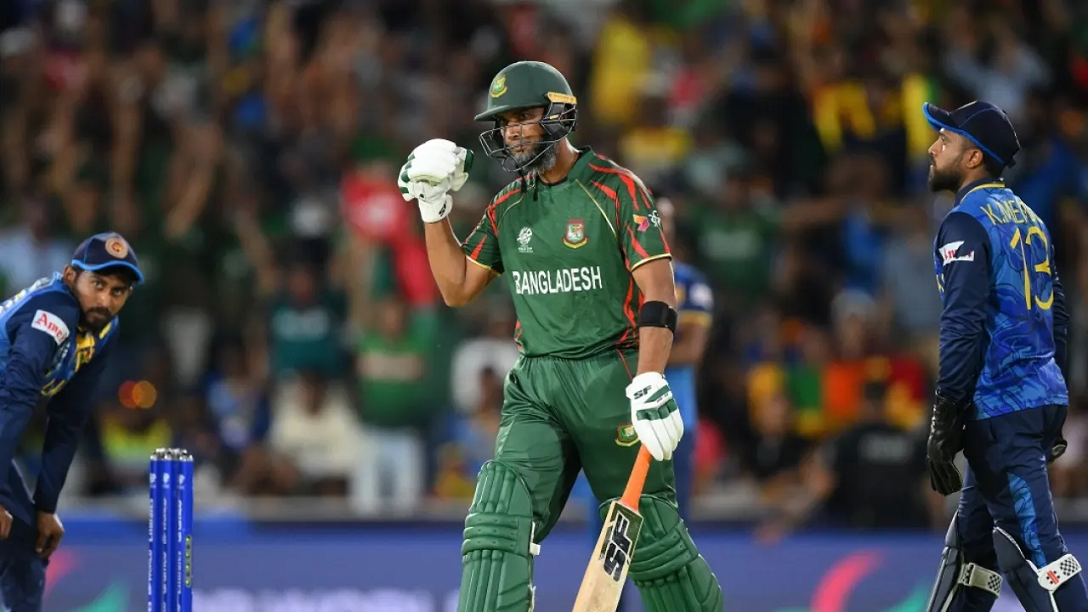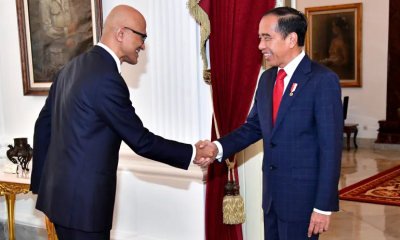Latest News
India’s Modi government rushes to regulate AI ahead of national elections

The Indian government has asked tech companies to seek its explicit nod before publicly launching “unreliable” or “under-tested” generative AI models or tools. It has also warned companies that their AI products should not generate responses that “threaten the integrity of the electoral process” as the country gears up for a national vote.
The Indian government’s efforts to regulate artificial intelligence represent a walk-back from its earlier stance of a hands-off approach when it informed Parliament in April 2023 that it was not eyeing any legislation to regulate AI.
The advisory was issued last week by India’s Ministry of Electronics and Information Technology (MeitY) briefly after Google’s Gemini faced a right-wing backlash for its response over a query: ‘Is Modi a fascist?’
It responded that Indian Prime Minister Narendra Modi was “accused of implementing policies some experts have characterised as fascist”, citing his government’s “crackdown on dissent and its use of violence against religious minorities”.
Rajeev Chandrasekhar, junior information technology minister, responded by accusing Google’s Gemini of violating India’s laws. “‘Sorry ‘unreliable’ does not exempt from the law,” he added. Chandrashekar claimed Google had apologised for the response, saying it was a result of an “unreliable” algorithm. The company responded by saying it was addressing the problem and working to improve the system.
In the West, major tech companies have often faced accusations of a liberal bias. Those allegations of bias have trickled down to generative AI products, including OpenAI’s ChatGPT and Microsoft Copilot.
In India, meanwhile, the government’s advisory has raised concerns among AI entrepreneurs that their nascent industry could be suffocated by too much regulation. Others worry that with the national election set to be announced soon, the advisory could reflect an attempt by the Modi government to choose which AI applications to allow, and which to bar, effectively giving it control over online spaces where these tools are influential.
The advisory is not legislation that is automatically binding on companies. However, noncompliance can attract prosecution under India’s Information Technology Act, lawyers told Al Jazeera. “This nonbinding advisory seems more political posturing than serious policymaking,” said Mishi Choudhary, founder of India’s Software Freedom Law Center. “We will see much more serious engagement post-elections. This gives us a peek into the thinking of the policymakers.”
Yet already, the advisory sends a signal that could prove stifling for innovation, especially at startups, said Harsh Choudhry, co-founder of Sentra World, a Bengaluru-based AI solutions company. “If every AI product needs approval – it looks like an impossible task for the government as well,” he said. “They might need another GenAI (generative AI) bot to test these models,” he added, laughing.
Several other leaders in the generative AI industry have also criticised the advisory as an example of regulatory overreach. Martin Casado, general partner at the US-based investment firm Andreessen Horowitz, wrote on social media platform X that the move was a “travesty”, was “anti-innovation” and “anti-public”.
Bindu Reddy, CEO of Abacus AI, wrote that, with the new advisory, “India just kissed its future goodbye!”
Amid that backlash, Chandrashekar issued a clarification on X adding that the government would exempt start-ups from seeking prior permission for deployment of generative AI tools on “the Indian internet” and that the advisory only applies to “significant platforms”.
But a cloud of uncertainty remains. “The advisory is full of ambiguous terms like ‘unreliable’, ‘untested’, [and] ‘Indian Internet’. The fact that several clarifications were required to explain scope, application, and intent are tell-tale signs of a rushed job,” said Mishi Choudhary. “The ministers are capable folks but do not have the necessary wherewithal to assess models to issue permissions to operate.”
“No wonder it has invoked the 80s feelings of a licence raj,” she added, referring to the bureaucratic system of requiring government permits for business activities, prevalent until the early 1990s, which stifled economic growth and innovation in India.
At the same time, exemptions from the advisory just for handpicked start-ups could come with their problems — they too are vulnerable to producing politically biased responses, and hallucinations, when AI generates erroneous or fabricated outputs. As a result, the exemption “raises more questions than it answers”, said Mishi.
Harsh Choudhry said he believes that the government’s intention behind the regulation was to hold companies that are monetising AI tools accountable for incorrect responses. “But a permission-first approach might not be the best way to do it,” he added.
India’s move to regulate AI content will also have geopolitical ramifications, argued Shruti Shreya, senior programme manager for platform regulation at The Dialogue, a tech policy think tank.
“With a rapidly growing internet user base, India’s policies can set a precedent for how other nations, especially in the developing world, approach AI content regulation and data governance,” she said.
For the Indian government, dealing with AI regulations is a difficult balancing act, said analysts.
Millions of Indians are scheduled to cast their vote in the national polls likely to be held in April and May. With the rise of easily available, and often free, generative AI tools, India has already become a playground for manipulated media, a scenario that has cast a shadow over election integrity. India’s major political parties continue to deploy deepfakes in campaigns.
Kamesh Shekar, senior programme manager with a focus on data governance and AI at The Dialogue think tank, said the recent advisory should also be seen as a part of the ongoing efforts by the government to now draft comprehensive generative AI regulations.
Earlier, in November and December 2023, the Indian government asked Big Tech firms to take down deep fake items within 24 hours of a complaint, label manipulated media, and make proactive efforts to tackle the misinformation — though it did not mention any explicit penalties for not adhering to the directive.
But Shekar too said a policy under which companies must seek government approvals before launching a product would inhibit innovation. “The government could consider constituting a sandbox – a live-testing environment where AI solutions and participating entities can test the product without a large-scale rollout to determine its reliability,” he said.
Not all experts agree with the criticism of the Indian government, however.
As AI technology continues to evolve at a fast pace, it is often hard for governments to keep up. At the same time, governments do need to step in to regulate, said Hafiz Malik, a professor of computer engineering at the University of Michigan with a specialisation in deepfake detections. Leaving companies to regulate themselves would be foolish, he said, adding that the Indian government’s advisory was a step in the right direction.
“The regulations have to be brought in by the governments,” he said, “but they should not come at the cost of innovation”.
Ultimately, though, Malik added, what is needed is greater public awareness.
“Seeing something and-believing it is now off the table,” said Malik. “Unless the public has awareness, the problem of deepfake cannot be solved. Awareness is the only tool to solve a very complex problem.”
(Aljazeera)
Latest News
‘Bloody policies’: MSF recovers 11 bodies from Mediterranean off Libya

The aid group Doctors Without Borders has reported recovering 11 bodies and rescuing dozens of people off the coast of Libya as it criticised the migration policies of the North African country and European countries.
In a statement on Friday, the group, known by its French initials MSF, said its Geo Barents rescue vessel managed to recover the bodies following a search operation lasting more than nine hours after being alerted by German nongovernmental organisation Sea-Watch, which also rescues refugees and migrants.
“As we cannot determine the reason behind this tragedy, we know that people will continue to take dangerous routes in a desperate attempt to reach safety, and Europe must find safe and legal pathways for them,” MSF said in a post on X. “This catastrophe must end!”
Sea-Watch said it is unclear whether the bodies were victims of a previously unknown shipwreck, adding that they tried to contact Libya’s coastguard to go and retrieve the dead, but received no reply.
“The so-called Libyan coastguard – financed by the EU – ignored our call demanding that the bodies be recovered,” the group said.
Thousands of people trying to head from Africa to Europe use Libya as a departing point, with the Italian island of Lampedusa the nearest European destination as they undertake the dangerous journey across the Mediterranean to escape war, poverty and persecution.
Italy, which wants to put a stop to the migration stream, has said Libya and neighbouring Tunisia must do more to stop people from going to sea. It has also clamped down on the operation of the rescue ships, arguing that they encourage people to head to Europe, a charge that is denied by the charities.
Emphasising its policy on the rescue ships, Italy said on Friday that it forced the MSF rescue vessel to take the 165 people that it had saved from boats in the Mediterranean operation to the northern port of Genoa. The port was more than 650 nautical miles (1,200km) from their position and much farther than the more convenient ports in nearby Sicily, significantly delaying assistance to the rescued.
The route in the central Mediterranean is the most dangerous migrant crossing in the world, with the United Nations registering more than 20,000 deaths and disappearances in the area since 2014.
More than 3,000 refugees and migrants went missing in 2023 while attempting to use the route, according to the International Organization for Migration.
According to Italy’s interior ministry, the number of arrivals in the country has dropped in 2024 to fewer than 21,800 people since the beginning of the year, compared with close to 53,300 in the same period last year.
[Aljazeera]
Latest News
Mustafizur, Rishad, Hridoy dazzle in Bangladesh’s tight two-wicket win over Sri Lanka

Nuwan Thushara’s last over brought Sri Lanka screaming back into the match,as he first bowled Rishad Hossain, and then nailed Taskin Ahmed in front of the stumps with a pinpoint swinging yorker. This left Bangladesh eight wickets down, with 12 runs still to get.
However, the experienced Mahmudullah was at the crease for Bangladesh, and despite some further nervy moments, pushed Bangladesh across the line off the last ball of the 19th over.
But this was a match chiefly decided by Bangladesh’s own outstanding bowling. Mustafizur Rahman was the best among them, using shorter lengths and his cutters efficiently, to claim figures of 3 for 17. Rishad Hossain’s three-for through the middle overs also kept Sri Lanka quiet.
Mustafizur was instrumental in Sri Lanka’s downward spiral through the middle overs, which culminated in a crash-and-burn end. Ultimately, their inability to find boundaries, or even rotate strike against good Bangladesh bowling resulted in their downfall. A score of 125 for 9 always seemed poor on a decent pitch, even if their bowlers made a match of it in the end.
Brief scores:
Bangladesh 125 for 8 in 19 overs (Towhid Hridoy 40, Litton Das 36; Dhanajaya de Silva 1-11, Nuwan Thushara 4-18, Wanidu Hasaranga 2-32, Matheesha Pathirana 1-27) beat Sri Lanka124 for 9 in 20 overs (Pathum Nissanka 47, Dhananjaya de Silva 21; Tanzim Hasan Sakib 1-24, Taskin Ahmed 2-25, Mustafizur Rahman 3-17, Rishad Hossain 3-22) by two wickets
[Cricinfo]
Latest News
Rashid, Farooqi and Gurbaz the stars as Afghanistan crush New Zealand

Afghanistan boosted their Super Eight chances with yet another dominating win, this time thumping New Zealand by 84 runs in Providence. Having beaten Uganda by 125 runs in their opening match, they are now at the top of Group C with a net run rate of 5.225.
After being sent in, Rahmanullah Gurbaz and Ibrahim Zadran gave Afghanistan a start of 103 in 14.3 overs. It came off the back of the 154 the pair added against Uganda, thus making them the first opening pair to register two successive century stands in the history of the T20 World Cup.
Afghanistan’s was an innings of two halves. They scored 55 for no loss in the first ten overs and 104 for 6 in the last ten, with Gurbaz contributing 80 off 56 balls. New Zealand, who had decided not to play any warm-up games, looked every bit rusty as their fielders dropped catches and missed run-out opportunities.
With the pitch assisting both seamers and spinners, chasing 160 was not going to be easy. But few would have expected New Zealand to collapse in the manner they did.
Fazalhaq Farooqi picked up three wickets in the powerplay and Rashid Khan three just after it. Eventually, both ended with identical figures of 4 for 17 as New Zealand were bowled out for 75 in the 15.2 overs. Glenn Phillips and Matt Henry were the only New Zealand batters to reach the double digits.
Trent Boult found some swing in the opening over but Gurbaz and Ibrahim showed their intent by picking up three fours off Henry from the other end. Both batters had luck on their side, too. Gurbaz got a second life when he skipped down the track to Santner and missed the ball, which went on to brush the leg stump but the bails did not budge. In the following over, Finn Allen dropped Ibrahim off Henry at the deep-square-leg boundary.
That was not all. Gurbaz got another reprieve after being involved in a miscommunication with Ibrahim. Having taken off for a single, Gurbaz had to retrace his steps and would have been run out had Conway not fumbled the throw.
Two balls later, New Zealand finally seemed to have found success when Santner pinged Ibrahim’s pads and umpire Kumar Dharmasena ruled it lbw. But the batter got the decision overturned on review as the ball was heading down the leg side. Immediately after that, Ibrahim hit Santner for an inside-out four as Afghanistan ended the powerplay on 44 for no loss.
New Zealand went against the prevailing wisdom of not bowling an offspinner when two right-hand batters at the crease, and Michael Bracewell repaid that faith by conceding only six off his first two overs.
Lockie Ferguson was even more frugal, going for five in his first two. He could have had Ibrahim off a slower full toss but a leaping Kane Williamson failed to pull off a one-handed stunner at mid-off. That meant while Afghanistan remained unscathed, they had only 55 on the board after ten overs.
Afghanistan had not hit a single six in the first ten overs, but there were five in the next three, including three in one Bracewell over as Gurbaz and Bracewell stepped on the accelerator. The pair took the side past 100 in the 14th over. New Zealand finally broke through when Ibrahim bottom-edged a short ball from Henry onto his stumps, after having been hit on the grille on the previous delivery.
Promoted to No. 3, Azmatullah Omarzai played his part with 22 off 13, which included two sixes in three balls off Henry. Mohammad Nabi fell for a first-ball duck but Gurbaz kept finding the boundary at regular intervals. However, a three-wicket, three-run final over by Boult kept Afghanistan to 159.
Farooqi gave Afghanistan a dream start with the ball. With the very first delivery of the innings, he uprooted Finn Allen’s leg stump as the ball moved in late. In the seamer’s next over, Conway pushed at one that seemed to come slower off the surface and was caught at extra cover.
The decision to give Farooqi a third over in the powerplay brought further rewards. This time, bowling around the wicket to Daryl Mitchell, he got a length delivery to just straighten and take the outside edge. Gurbaz took a regulation catch to complete the dismissal and leave New Zealand 28 for 3.
It could have been worse for New Zealand. In between, Naveen-ul-Haq had rapped Kane Williamson’s front pad after the batter had moved across to play a delivery. Afghanistan sent it upstairs for an lbw review but the umpire’s call saved the New Zealand captain.
Afghanistan did not have to wait too long for Williamson’s wicket. Rashid brought himself on after the powerplay and struck straightaway as Williamson guided one to first slip. But Rashid was just warming up. In his next over, he dismissed Mark Chapman and Bracewell off successive deliveries to leave New Zealand on 43 for 6. Chapman went for a pull and got bowled; Bracewell was late to bring his bat down and was lbw.
Phillips was New Zealand’s last hope. He did hit a couple of boundaries but was soon caught at long-on when he tried to take on Nabi. That ended any hopes of revival New Zealand might have had.
Brief scores:
Afghanistan 159 for 6 in 20 overs (Rahmanullah Gurbaz 80, Ibrahim Zadran 44, Azmatullah Omarzai 22; Trent Boult 2-22, Matt Henry 2-37, Lockie Fergusoan 1-28) beat New Zealand 75 in 15.2 overs (Glenn Phillips 18; Rashid Khan 4 for 17, Fazalhaq Farooqi 4 for 17, Mohammad Nabi 2-16) by 84 runs
[Cricinfo]
























